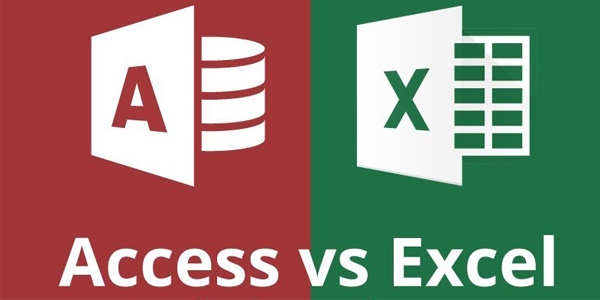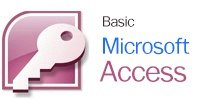การจัดการฐานข้อมูลด้วย Microsoft Excel และ Access
รายละเอียด Course ID: mic-04-14

ในหลักสูตรนี้จะแนะนำพื้นฐานการสร้างฐานข้อมูลในโปรแกรม Microsoft Access 2010 โดยเริ่มจากการใช้ Template ที่มากับตัวโปรแกรม เนื้อหาในหลักสูตรครอบคลุมโครงสร้างและการปรับแต่งฐานข้อมูลให้ตรงกับความต้องการของผู้ใช้งาน มีหัวข้อพื้นฐานเช่น การทำงานกับตาราง แบบฟอร์ม คิวรี่ แมโคร และการทำรีพอร์ทรวมถึงกราฟต่างๆ
ส่วนในการทำงานกับโปรแกรม Microsoft Excel จะได้เรียนรู้ฟังก์ชันการทำงานกับฐานข้อมูลเชิงลึกมากมาย แต่พื้นฐานจนถึงการนำไปประยุกต์ใช้งานจริงต่อไป
รอบการเปิดอบรม
วิดีโอแนะนำคอร์ส
ไฟล์รายละเอียดคอร์ส
- การจัดการฐานข้อมูลด้วย Microsoft Excel และ Access (Course outline PDF)
- โปรไฟล์ของบริษัทไอทีจีเนียส เอ็นจิเนียริ่ง (โปรไฟล์ไอทีจีเนียส PDF)
วัตถุประสงค์
- มีความรู้ความสามารถในการเรียกใช้งานโปรแกรม Microsoft Excel ได้
- มีความรู้ความสามารถในการเรียกใช้งานโปรแกรม Microsoft Accessได้
- สามารถประยุกต์รูปแบบการใช้งานต่างๆ ได้
กลุ่มเป้าหมาย
- นักเรียน-นักศึกษา
- ครู-อาจารย์ที่ต้องการเพิ่มทักษะความรู้
- บุคคลทั่วไปที่สนใจการใช้งาน MS Access และ Excel
ความรู้พื้นฐาน
- มีความรู้ด้านภาษาอังกฤษบ้างเล็กน้อย
- มีความเข้าใจในระบบคอมพิวเตอร์อยู่บ้าง
- ใช้งานระบบปฏิบัติการ Windows ได้ดี
ระยะเวลาในการอบรม
- 18 ชั่วโมง
ราคาคอร์สอบรม
- ราคาปกติ 8,900 บาท / คน
- โปรโมชั่นลด 10% เหลือ 8,010 บาท / คน
- ราคาเหมาจ่าย (ผู้อบรมตั้งแต่ 10 คน) ตามแต่ตกลงกัน
- ขอใบเสนอราคา
วิทยากรผู้สอน
คอร์สที่ควรอบรมก่อนหน้า
คอร์สต่อเนื่องที่แนะนำ
เนื้อหาการอบรม
1. Understanding Databases
- What are databases?
- Exploring databases and database management systems
2. Database Fundamentals
- The features of a relational database
- Exploring unique values and primary keys
- Defining table relationships
- Describing many-to-many relationships
- Transactions and the ACID test
- Introduction to Structured Query Language (SQL)
3. Database Modeling: Tables
- Introduction to database modeling
- Planning your database
- Identifying columns and selecting data types
- Choosing primary keys
- Using composite keys
4. Database Modeling: Relationships
- Creating relationships
- Defining one-to-many relationships
- Exploring one-to-one relationships
- Exploring many-to-many relationships
- Understanding relationship rules and referential integrity
Microsoft Access 2010
1. Basic Microsoft Access 2010
- Database concepts and terminology
- Starting Access
- Creating a new file
- Trusting a file
- The Quick Access toolbar
- Backstage view
- Exploring ribbons
- Using the Navigation pane
2. Formatting and Appearance
- Entering data into your tables
- Formatting tables
- Finding, sorting, and filtering records
3. Forms
- Creating data-entry forms
- Using the Form Wizard
- Modifying a form in Layout view
- Using Design view
- Setting tab stops
- Adding buttons to a form
- Using navigation forms
4. Queries
- Introduction to queries
- Using the Query Wizard
- Creating a query in Design view with criteria
- Creating wildcard queries
- Creating reusable parameter queries
- Creating yes/no queries
- Creating crosstab queries
5. Using Other Applications with Access
- Importing Excel and text data
- Exporting data into Excel
- Exporting to PDF
- Exporting into a Word Mail Merge
- Publishing to a web browser in HTML or XML
- Sharing via email
- Collecting data over email
6. Access Database maintenance and backup
- Backup your data!
- How to backup your database file
- Online backup recommendations
- Backing up a table
Microsoft Excel 2010
1. Getting Started
- Exploring three common uses for Excel
- Touring the interface
- Finding the commands you need
- Using Backstage view or the File tab
- Maintaining file compatibility
2. Worksheet Basics
- Creating a worksheet
- Techniques for copying and pasting
- Entering data automatically with Auto Fill
- Targeting large data groups
- Changing a worksheet's structure
3. Excel Formula Basics
- Understanding formulas and functions
- Entering data in a worksheet
- Adding numbers manually
- Adding numbers using Sum and AutoSum
- Adding a whole worksheet
- Working with numbers in columns
- Preventing errors using absolute references
- Working with times and dates
- Using IF
- Using SUMIF and AVERAGEIF
- Naming and using cell ranges
4. Essential Formatting
- Formatting numbers and dates
- Applying fonts, background colors, and borders
- Adjusting columns, rows, and text
- Using conditional formatting
- Using custom conditional formatting
- Adding pictures and shapes
5. Advanced Formatting
- Inserting SmartArt
- Coordinating a look using themes
- Applying built-in styles
- Creating and sharing styles
- Using templates
- Creating and using original templates
6. Collaborating with Others
- Importing and exporting data in Excel
- Setting workbook permissions
- Inserting and editing comments
- Sharing a workbook
- Tracking changes
- Saving files in shared locations
Example using Excel and Access to collect result of LAB test
- Setting Up a Database in Excel
- Cleaning Up Your Excel Data
- Financial Functions in Depth
- Charts in Depth
- Pivot Tables in Depth
- Data Validation in Depth
- Advanced Formatting Techniques
- Macros in Depth
- Real-World Projects


 Basic Microsoft Access 2010/2013 พื้นฐาน
Basic Microsoft Access 2010/2013 พื้นฐาน Advanced Microsoft Excel 2010/2013 ขั้นสูง
Advanced Microsoft Excel 2010/2013 ขั้นสูง







